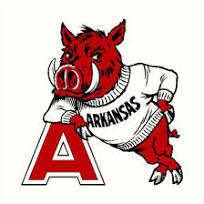“I AM LEAVING”: Chiefs key player makes shocking announcement today…

Chris Jones and the Kansas City Chiefs reach a record-breaking five-year contract.
Deal involves a guaranteed $95 million.
On the eve of free agency, the Chiefs keep their core defensive players.
The Associated Press
Sun., Mar. 10, 2024, 12:25 PM
Distribute
According to sources who spoke to the Associated Press, Chris Jones, an All-Pro defensive tackle, has agreed to terms on a five-year contract for $95 million guaranteed by the Super Bowl champion Kansas City Chiefs and the defensive standout. This deal prevents Jones from entering the free agent market.

It is anticipated that the guaranteed money will be received during the first three years, with the next two years being uncertain. With this agreement, Jones will be paid more than any defensive tackle in NFL history.

A short while later, Jones tweeted: “KC…five more years of excellence! three times.
Following the Chiefs’ victory over the 49ers in the Super Bowl last month, Jones made it obvious that he was keen to pursue a three-peat. However, he had to first come to terms with staying in Kansas City, which had proven to be challenging during the previous two offseasons.
Jones missed the whole offseason program, which included a required minicamp and training camp, as well as Week 1 of the regular season because he and the Chiefs were at such a standstill heading into the last year of his prior contract. Before, Jones accrued fines of around $4 million.accepting a one-year contract with generous incentives that allowed him to return to the field this past season.
Deal involves a guaranteed $95 million.
On the eve of free agency, the Chiefs keep their core defensive players.
The Associated Press
Sun., Mar. 10, 2024, 12:25 PM
Distribute
According to sources who spoke to the Associated Press, Chris Jones, an All-Pro defensive tackle, has agreed to terms on a five-year contract for $95 million guaranteed by the Super Bowl champion Kansas City Chiefs and the defensive standout. This deal prevents Jones from entering the free agent market.

It is anticipated that the guaranteed money will be received during the first three years, with the next two years being uncertain. With this agreement, Jones will be paid more than any defensive tackle in NFL history.
Jones, who turns 30 in July, climbs to become one of the NFL’s highest-paid defensive players, only behind
By cutting Jerry Jeudy, the Broncos will save about $13 million in salary cap space in addition to cash.
The Broncos have traded receiver Jerry Jeudy to the Browns in exchange for two draft picks. sources
Continue reading
Jones’s representatives, Michael and Jason Katz, congratulated “the highest-paid defensive tackle in NFL history” via Twitter in a post on X.
A short while later, Jones tweeted: “KC…five more years of excellence! three times.
Following the Chiefs’ victory over the 49ers in the Super Bowl last month, Jones made it obvious that he was keen to pursue

Jones missed the whole offseason program, which included a required minicamp and training camp, as well as Week 1 of the regular season because he and the Chiefs were at such a standstill heading into the last year of his prior contract. Before accepting an incentive-filled one-year contract that allowed him to return to the field this past season, Jones racked up nearly $4 million in fines.
In response, Jones started all the remaining games, including the meaningless regular-season finale against the Chargers, in which he collected the last sack required to earn the $1.25 million bonus stipulated in his contract.


The Chiefs have made a concerted effort to retain the majority of their second-ranked defense in the league for the upcoming campaign.












